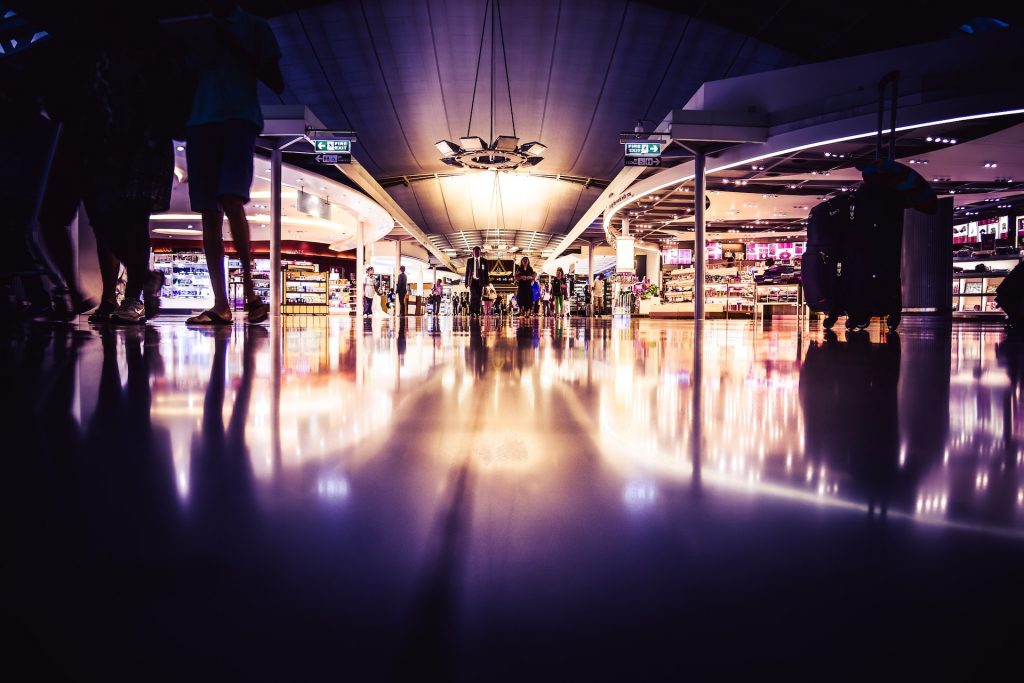Elevator SMS: Safety or Bureaucracy First?
Instructors · 2 min read
Whether you are planning a trip or just dreaming of one, check our recommendations for the best airlines to fly to Japan!

Most people rely on imagination or mirrors to try things on. Retailers try to lure you with samples of fancy floral perfume, catchy eye shadow colors, and making sure there are no lengthy line-ups at changing rooms. As early as 2014, Sephora (cosmetics) experimented with the ModiFace augmented reality mirror. The mirror tracks the location of a user’s facial features and applies eye shadow colors directly via a video feed from a camera.
Through using the mirror, shoppers are able to try out different shades of cosmetics by tapping a palette on the screen and also view eye shadows from different angles as they move their heads from side to side. The flagship store in Madrid offers AI-powered mirrors that deliver hyper personalized beauty recommendations for customers, and will display its QR code to find in-store or shop online. It’s got gender, age, and diversity covered, too. There’s nothing offensive.
miAdidas invited customers to design their own personalized footwear online until it switched to co-creation in 2020. And Nike will now let people design and sell sneakers in the metaverse and bag a royalty cut. These experiences make sense. 4 out of 5 GenZ-ers and older crowds now shop in social commerce, but they don’t necessarily purchase there.
Metaverse analytics on how people use their avatars (which will not be as cartoonsy as they are now) is meant to help improve shopping experiences in real life, in real stores, where we have real shelves and aisles, but where retailers can increasingly engage with customers digitally, too. Retail media using dynamic content billboards underpinned by AI is, as a matter of observation, the next advertising spend trend. Imagine when we bring this onboard aircraft.
So, it’s all coming together.
What about airlines and travel, and why is Offer and Order (O&O) management that modernizes conventional reservation systems (PSS + OMS) only partially enabling the future of airline retailing?
Read on to find out more.

First of all, airlines focusing on intermediaries are not retailing but have an interesting dynamic to deal with going forward. They need to embrace channel friction to transition to next-gen business models. Direct-to-consumer (D2C) is the only effective way to service sophisticated experiences and deliver immersive content and first-party retail analytics. In the short term, airlines have no choice but to use NDC to communicate (richer) offers better to agencies. But servicing remains a problem.
Also, airline retailing is not necessarily about selling more (ancillaries) in the current booking path. Ancillaries are too static and booking paths too inflexible to meet future customer needs, even if individual items can get bundled with dynamic pricing. With airlines showing average customer bounce times of 5min56sec in the context of 8-second screen impression attention time or the 8-minute average booking attention span, we know it’s not performing to its potential. The approach is too linear.
The customers are not linear, and neither is their shopping. Multi-contextual engagement and selling only works outside that booking path. It’s not a booking engine the customers need.
The convenience and user experience we should expect can only come from a marketplace that has dynamic content and shortcuts, as in digital assistants designed for the customer. Meaning, dynamic procurement and not dynamic presentation of overwhelming static content. Less is ultimately more if the presentation is better and customers engage more frequently depending on their ‘state of mind’, not ‘stage of the journey’.
This means: digital creation of any product/any experience that the ingested insights in real time tell us is relevant to the customer in that search or playlist, AND how we contributed to the search, then ensuring it is available to service in real time and then to transact. Servicing is then anything that may come the customer’s (and thus airline’s) way in daily life. Change of heart, change their mind, and other disruptions.
It is for that reason that NDC is limiting retail opportunities in the travel industry. It currently looks at selling from within [the vertical], and not servicing from outside. That exposes the current stage on the learning curve of retailing.
Adidas or Nike should be able to market through the airline [marketplace] to that customer because they are planning a tennis vacation and golf tee times. More importantly, it should be procured dynamically as the marketplace engages with both the customer and the experience providers through AI-2-AI. Most opportunities are in that architecture. Universe commerce, not a closed online store.

The marketplace is the layer that combines MarTech, SalesTech and stacks all dynamic revenue optimization techniques as a bundle by executing end models that are goal-centric. The goals are determined by customers, and the airline problem-solves it in a way that makes commercial sense.
It cannot function without the integration of sales, ancillary, RM, and loyalty in a Customer organization with Enterprise AI. Because it needs to harmonize all their data to solve holistic customer problems. That’s how we improve customer service.
Unfortunately, it’s not easy plumbing, or as easy as customers think Google Maps functions.
And, it does not solve all problems. We are going through a digital saturation phase. Podcast listener growth is slowing, digital advertising is temporarily slowing, and even GenZ-ers want the buzz and emotions around touching things in brick-and-mortar stores. The flipside of the pandemic.
This tangibility, funny enough, is important in retailing and I have often advocated the return of experiential airline stores, but with embedded digital experiences, whether virtual, or augmented. And that is the role of metaverse applications as well. To speak to imagination, to visualize experiences and stimulate sensory emotions, but also to blend physical with virtual. It’s the ultimate pre-travel incentive to travel.
Airlines have invested a lot in digital marketing and impressions in social media. But it’s important to move beyond brand awareness and inspire customers to create their own experiences with the help of technology in physical environments, such as stores. Airlines are not that visible in everyday life other than plastering their name and logo in stadiums.
They do not engage with you in supermarkets, corner stores, clothing or lifestyle stores, because they assume they need to sell products and that it can all be digital. The crux is in the complimentary blend, ideally with human touch for high-tech-high-touch with real people.

The most important aspect of customer engagement now is to relate to emotions that can inspire customers to become more physical and try out an experience that allows them to digitally create and sneak preview their options. In a store like the Apple store, where visiting itself is part of the experience. It can help bring down the barriers to browsing and shopping in metaverse, using your hands with a gland, shopping through digital shelves and digital aisles much faster than running through a Macy’s store.
Speaking of, there is a reason why Macy, Target and other big brands launch small-store formats and actually see their foot traffic and dwell time go up to almost 25-30 minutes. It’s all about relevance and speeding up how convenient it is to get to relevant experiences.
Food for thought as to how digital airline retailing should evolve to ensure we serve customers better and keep up with their expectations, impatience, and what that means for online booking engines or the transition to emerging platforms in Web3.
Instructors · 3 min read
With or without altitude, Christiaan van der Heijst, can produce splashy and utterly lively impressions and wildly sensations. The emotions he creates are a reflection of artsy talent. It inspires young and old to look at things differently. Speaking off…
